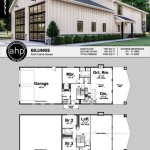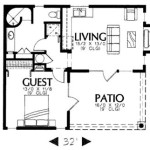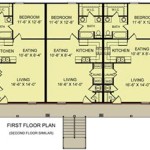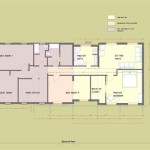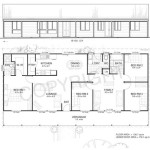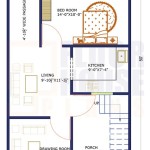Coastal One-Story House Plans: A Comprehensive Guide
Coastal one-story house plans represent a significant architectural style, particularly suited for regions near the ocean or large bodies of water. These designs prioritize functionality, aesthetic appeal, and resilience against the elements, offering a blend of comfort and practicality. Understanding the nuances of these plans is crucial for those considering building or renovating a home in a coastal environment.
The increasing popularity of coastal one-story homes stems from several factors. The convenience of single-level living appeals to a wide range of homeowners, including families with young children, individuals with mobility issues, and those seeking to age in place. Furthermore, the architectural style often reflects a relaxed, informal aesthetic, aligning with the lifestyle typically associated with coastal living.
Effective coastal one-story house plans incorporate various features designed to maximize natural light, ventilation, and views. They often emphasize outdoor living spaces, seamlessly integrating the interior with the exterior. The selection of materials and construction techniques also plays a vital role in ensuring the longevity and durability of the structure in the face of harsh coastal conditions.
Key Point 1: Design Considerations for Coastal Environments
Designing a one-story home for a coastal environment necessitates careful consideration of several environmental factors. These include wind resistance, flood protection, and resistance to salt spray. Ignoring these factors can lead to significant structural damage and costly repairs over time.
Wind resistance is paramount in coastal regions prone to hurricanes and strong storms. House plans should incorporate features such as reinforced framing, hurricane straps to secure the roof to the walls, and impact-resistant windows and doors. The roof design itself can also play a crucial role in wind resistance, with hip roofs generally being more resistant than gable roofs.
Flood protection is another critical design consideration, particularly in low-lying coastal areas. Elevating the house above the base flood elevation (BFE) is a common strategy to minimize flood damage. This can be achieved through the use of pilings, stilts, or a raised foundation. In addition, flood vents can be incorporated into the foundation walls to allow floodwaters to flow in and out, reducing hydrostatic pressure.
Salt spray, a constant presence in coastal environments, can corrode building materials over time. Selecting materials that are resistant to salt corrosion is essential. This includes using stainless steel fasteners, choosing siding materials such as fiber cement or vinyl, and applying protective coatings to metal surfaces. Regularly washing exterior surfaces can also help to remove salt deposits and prevent corrosion.
Beyond structural considerations, energy efficiency is also a critical aspect of coastal home design. Strategies such as using high-performance insulation, installing energy-efficient windows and doors, and incorporating passive solar design principles can help to reduce energy consumption and lower utility bills. Maximizing natural ventilation can also reduce the need for air conditioning in warmer climates.
Key Point 2: Architectural Styles and Features
Coastal one-story house plans encompass a variety of architectural styles, each with its own unique characteristics and aesthetic appeal. Common styles include the traditional beach cottage, the contemporary coastal design, and the Craftsman-inspired coastal bungalow. The choice of style will depend on personal preferences, the surrounding landscape, and local building codes.
Traditional beach cottages typically feature simple, rectangular floor plans, gabled roofs, and shingle siding. They often incorporate large porches or decks to provide outdoor living space. Interiors are typically informal and relaxed, with an emphasis on natural light and ventilation. Color palettes often incorporate light, airy tones, reflecting the colors of the sand and sea.
Contemporary coastal designs tend to be more minimalist and modern, with clean lines, flat or low-pitched roofs, and large expanses of glass. They often incorporate open floor plans and seamless transitions between indoor and outdoor spaces. Materials such as concrete, steel, and glass are commonly used. Color palettes tend to be neutral, with pops of color provided by artwork and accessories.
Craftsman-inspired coastal bungalows combine the charm of the Craftsman style with coastal elements. They typically feature low-pitched roofs with wide eaves, exposed rafters, and large front porches. Interiors often incorporate natural materials such as wood and stone. Color palettes tend to be warm and earthy, with accents of blues and greens.
Regardless of the architectural style, certain features are commonly found in coastal one-story house plans. These include large windows and sliding glass doors to maximize views and natural light, open floor plans to facilitate airflow and social interaction, and generous outdoor living spaces such as porches, decks, and patios. The orientation of the house on the lot is also important, with careful consideration given to prevailing winds, sun exposure, and views.
High ceilings are also often incorporated into coastal designs. This not only enhances the sense of spaciousness but also allows for better ventilation and natural light penetration. Skylights and clerestory windows can also be used to bring additional light into the interior of the house.
Key Point 3: Interior Layout and Functionality
The interior layout of a coastal one-story house plan should be carefully considered to maximize functionality and comfort. Open floor plans are a popular choice, as they create a sense of spaciousness and facilitate airflow. However, it is important to define distinct living areas within the open space to avoid a feeling of being overwhelmed.
The kitchen is often the heart of the home in coastal designs, serving as a gathering place for family and friends. A well-designed kitchen should include ample counter space, storage, and a functional layout. Islands and peninsulas can provide additional workspace and seating. Incorporating coastal-inspired design elements, such as shiplap walls, nautical lighting fixtures, and light-colored cabinetry, can enhance the overall aesthetic.
Bedrooms should be designed as tranquil retreats, offering privacy and comfort. Master suites often include features such as walk-in closets, en-suite bathrooms, and private access to outdoor spaces. Guest bedrooms should be designed to be flexible and adaptable, accommodating both short-term and long-term visitors.
Bathrooms should be functional and stylish, with durable and easy-to-clean surfaces. Incorporating features such as walk-in showers, soaking tubs, and double vanities can enhance the functionality and appeal of the bathrooms. Natural light and ventilation are also important considerations. Skylights and operable windows can help to create a bright and airy atmosphere.
Storage is often a challenge in one-story homes, so it is important to maximize storage space throughout the house. Built-in cabinets, shelving units, and walk-in closets can help to keep clutter at bay. Utilizing vertical space is also a good strategy for optimizing storage. Attics and crawl spaces can be used for storing seasonal items and other infrequently used belongings.
Mudrooms are a valuable addition to coastal homes, providing a space to remove sandy shoes and wet clothing before entering the main living areas. Mudrooms should include features such as durable flooring, storage benches, and coat hooks. A utility sink can also be a useful addition for rinsing off sandy feet and beach gear.
Finally, consider the accessibility of the home. Universal design principles, such as wider doorways, lever handles, and grab bars in bathrooms, can make the home more accessible to people of all ages and abilities. These features can also enhance the resale value of the home.
In summary, designing a coastal one-story house plan requires careful consideration of environmental factors, architectural styles, and interior layout. By paying attention to these details, it is possible to create a beautiful, functional, and durable home that will provide years of enjoyment.

1 Story House Plans One Modern Luxury Home Floor

By The Sea Coastal House Plans From Home

Coastal Plan 3 134 Square Feet 4 Bedrooms 5 Bathrooms 207 00110

Coastal House Beach Floor Plans

Beach House Plan Caribbean Florida Style Coastal Home Floor

Coastal Plan 1018 00272

One Level Coastal House Plan With Split Garage Layout 66390jmd Architectural Designs Plans

Beach Style House Plan 3 Beds 5 Baths 3527 Sq Ft 27 492 Houseplans Com

Coastal House Plan 1018 00272

One Level Coastal House Plan With Split Garage Layout 66390jmd Architectural Designs Plans


